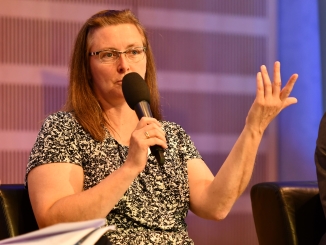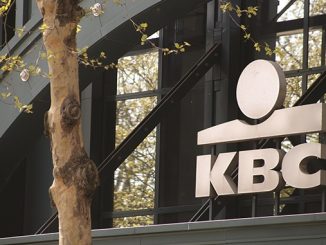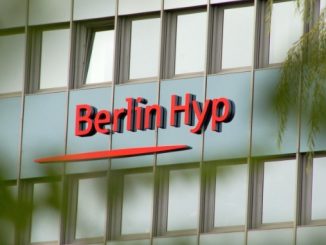
MünchenerHyp became the first issuer to have sold both green and social covered bonds on Tuesday, with the launch of a EUR500m “Ecological ESG” deal that should be the first of annual issues, according to its head of debt IR, although plans for social bonds may take some time to come to fruition.
Münchener Hypothekenbank’s EUR500m long five year Pfandbrief issue – with proceeds earmarked for a mix of retail and commercial mortgages – attracted more than EUR900m of demand from 80 investors in 14 countries. Some 40% went to what the lead managers characterised as green accounts.
Claudia Bärdges-Koch, head of debt investor relations and client acquisition at MünchenerHyp, said the number of accounts was above expectations and more than anyone at the bank could recall for a EUR500m benchmark.
“We had a lot of completely new names where I even had to ask, sorry, is that a bank or an asset manager?” she told Sustainabonds. “Allocations were tough as more or less everyone was complaining that they didn’t get more, although we always try our best to keep everyone happy.”
Bärdges-Koch noted that the proportion of SRI investors, at 40%, is higher than the 32% share in its first “ESG Pfandbrief”, a smaller, EUR300m five year deal in September 2014 where cooperative housing loans were the eligible assets – and which was the first ever green or social covered bond.
“That the green part is bigger is a nice development for the market,” she added.
Banks were allocated 44.0%, asset managers and funds 37.4%, central banks/official institutions and sub-sovereigns 14.4%, and insurance companies 4.2%. Germany took 62.9%, Nordics 14.6%, the UK 8.9%, Benelux 5.0%, France 3.6%, the Middle East and Asia 3.5%, and other Europe 1.5%.
Leads ABN Amro, DZ and HSBC opened books on the EUR500m no-grow December 2023 deal on Tuesday morning, having teed up the trade the previous day, following the completion of a roadshow last Thursday. A syndicate banker at one of the leads said that announcing the deal the day beforehand typically helps interest in green bonds be lined up, with the low risk nature of the trade meanwhile minimising any overnight execution risk.
Bärdges-Koch (pictured) said that German agency KfW announcing a five year euro benchmark for the same day gave MünchenerHyp pause for thought, but the issuer decided that – particularly with the agency not issuing in green format – the transactions were sufficiently distinct for the concurrent supply not to be a problem, with MünchenerHyp also offering some 13bp more than KfW based on initial guidance.
 Following guidance of mid-swaps minus 6bp, pricing was set at minus 8bp after orders had surpassed EUR850m. Bärdges-Koch said that pricing tighter than minus 8bp may have been possible, but would not have been consistent with MünchenerHyp’s approach.
Following guidance of mid-swaps minus 6bp, pricing was set at minus 8bp after orders had surpassed EUR850m. Bärdges-Koch said that pricing tighter than minus 8bp may have been possible, but would not have been consistent with MünchenerHyp’s approach.
“There was a bit of discussion, but we just said, look, our investors are used to us not going to the extreme – we don’t push the price by 3bp, but rather leave another basis point of secondary market performance to our investors,” she said. “That was why we said we started at minus 6bp with a target of minus 8bp, so it was exactly the price we were hoping to get.”
A syndicate banker at one of the leads said that the green element had helped give the deal momentum and attract accounts who might not otherwise have been interested in the Pfandbrief, even if demand did not come in as fast as for some other green bonds given the tight levels at which the asset class trades. He noted that once it was clear the deal was covered, some big Scandinavian orders came in, helping the book towards its final size.
“They can be happy with what they have achieved,” he added.
Bärdges-Koch said a key point for investors was the way in which MünchenerHyp has introduced a green retail mortgage that features a discount for borrowers – and also a discounted loan for families.
“Particularly the new and ‘dark green’ investors, they were very convinced by the fact that we have implemented our own products, both on the green and social side, and that this is hence part of our core business,” she said. “We offer green loans every day on a permanent basis and our green portfolio is already beyond EUR1.1bn – we did not just put together some assets for the sake of this bond.”
MünchenerHyp is now likely to sell one Ecological issue per year, according to Bärdges-Koch, with the pace dependent on growth in its green retail lending. The eligible assets currently include some 1600 retail loans, versus 14 commercial mortgages, and she said the bank is keen to maintain a high proportion of the granular retail loans for its Ecological issues.
The bank is also planning on issuing Social ESG Pfandbriefe, but – as with the Ecological issuance – the timing will depend on the development of the respective assets, in this case a Family Loan that MünchenerHyp only launched this January. The Ecological issue came almost three years after its Green Loan was launched.
“We have to be realistic,” said Bärdges-Koch, “it will take some time.”
MünchenerHyp’s first ESG Pfandbrief, a EUR300m deal in September 2014 taking in cooperative housing loans, matures in September next year, but Bärdges-Koch said that the issuer will not simply roll over the assets into a new social bond but add social family loans.
The covered bonds are rated Aaa by Moody’s and have a second party opinion from ISS-oekom, which also confirms the framework’s alignment with the Green Bond Principles.



